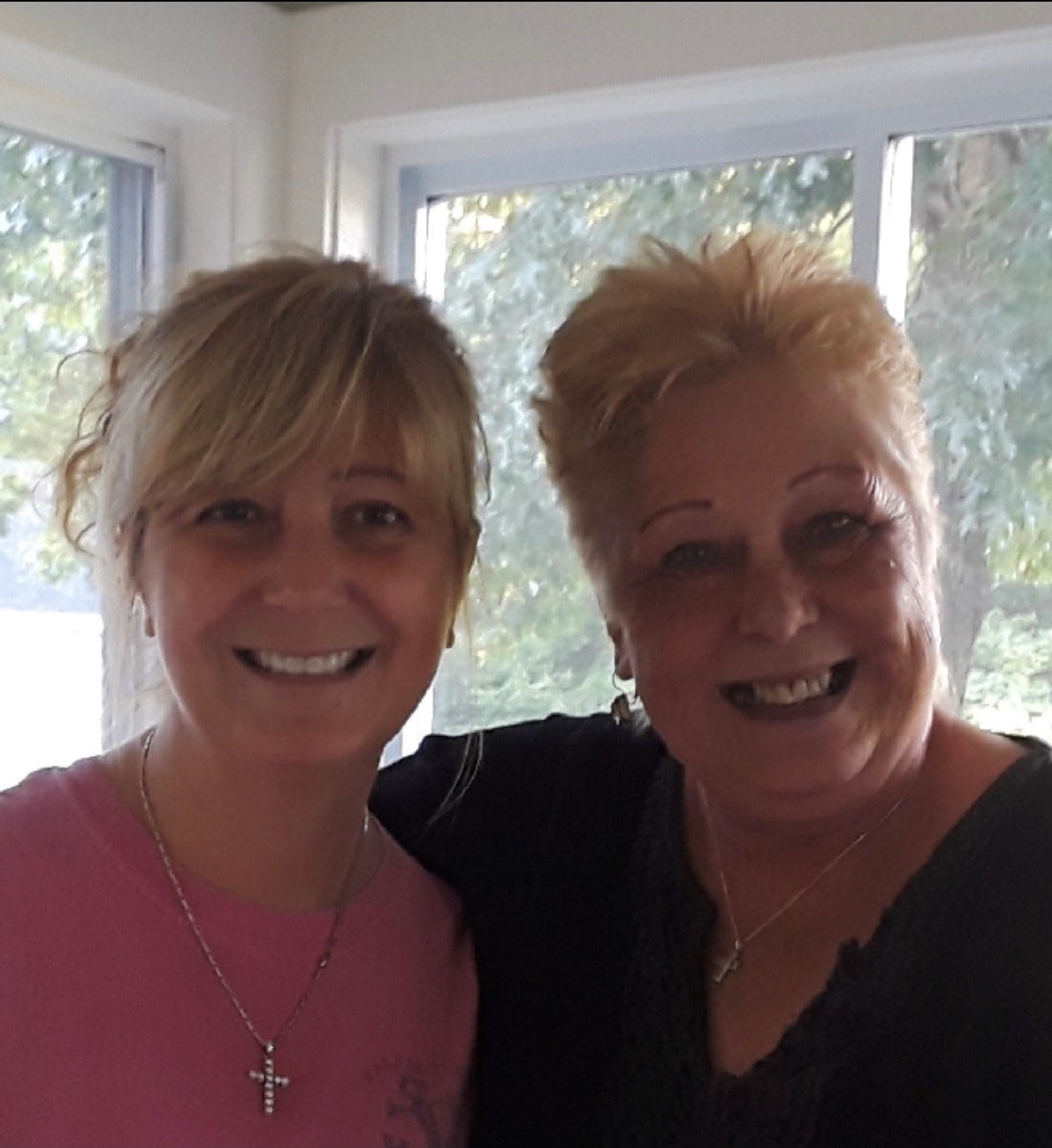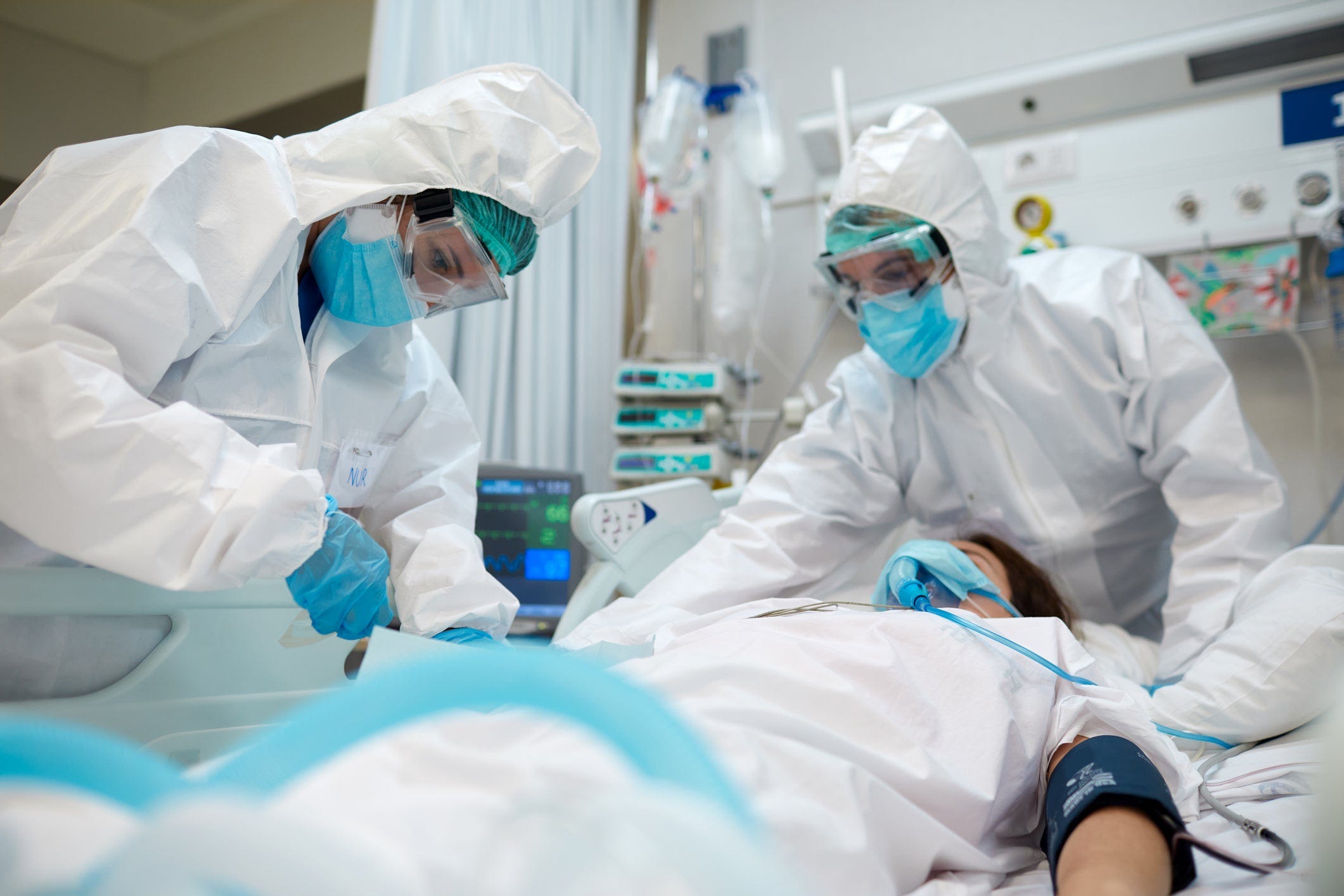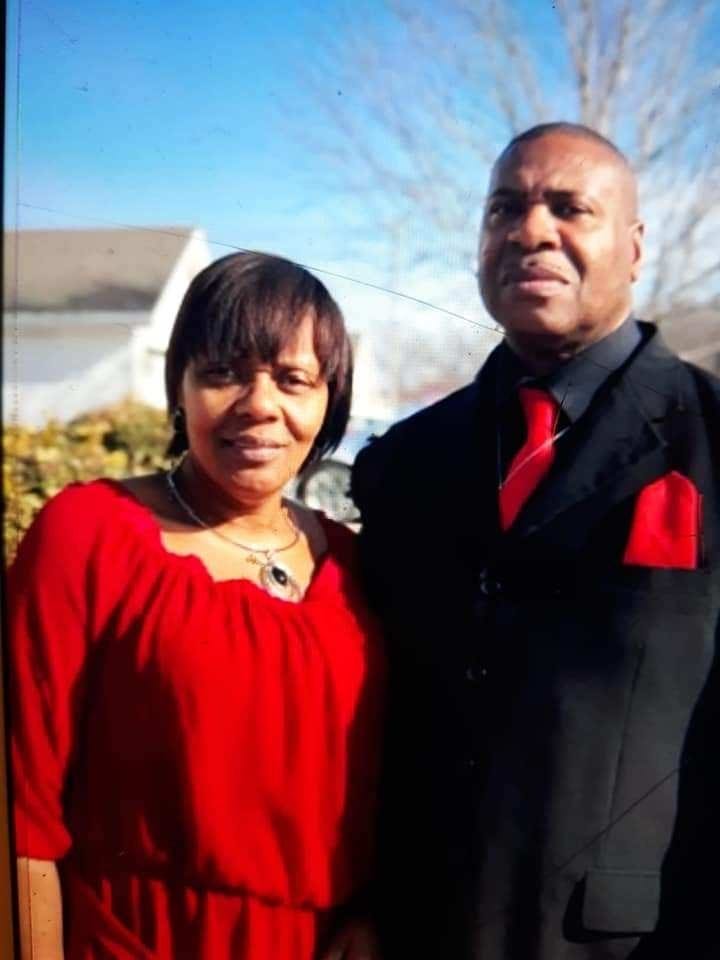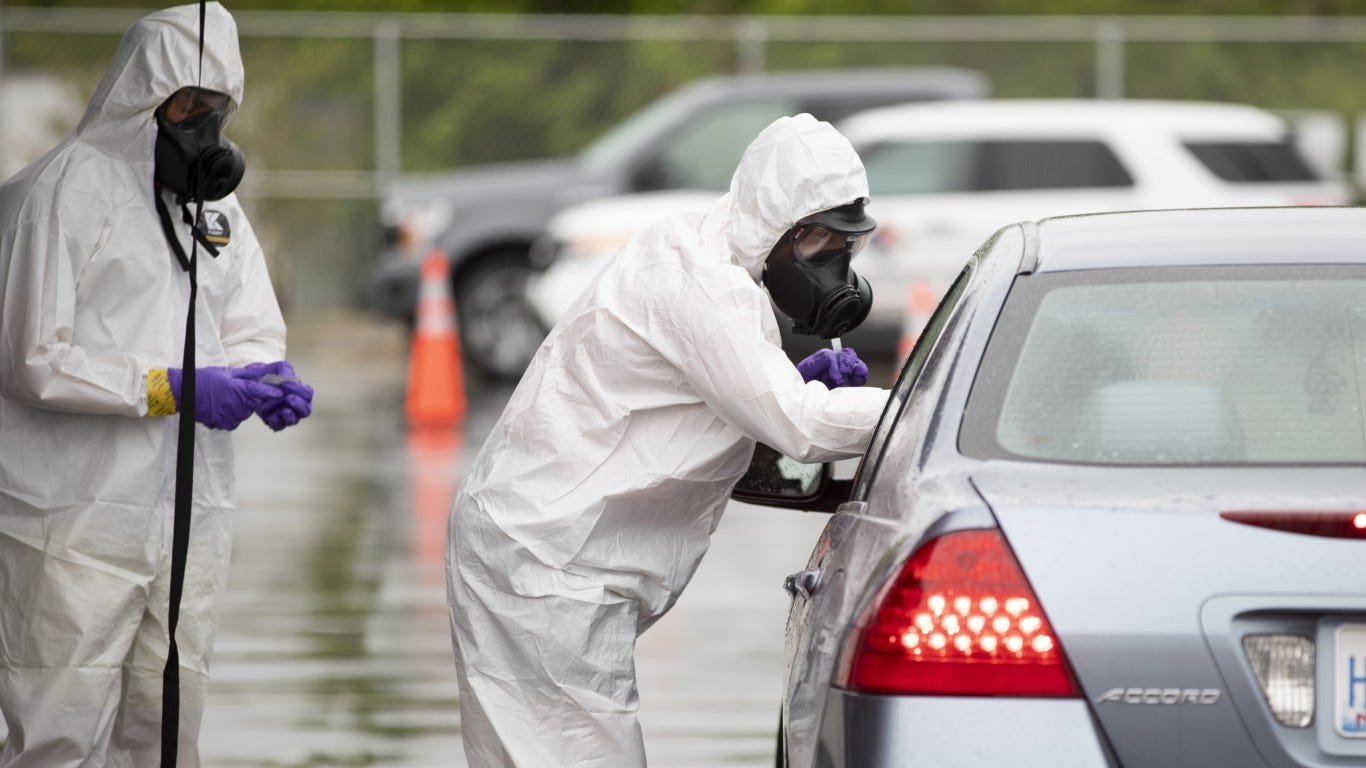The “IN AMERICA: How Could This Happen” project artist Suzanne Firstenberg walks through the installation on the DC Armory Parade Ground on Oct. 23, 2020, in Washington, D.C. At the time, the project honored each of the 225,000 lives lost in the U.S. from COVID-19 with a white flag. Another 775,000 Americans have been killed by the disease since then. Jack Gruber, USA TODAY
As a longtime nurse who tended to cancer patients and has seen people die suddenly of traumatic injuries, Julie Anastas had made her peace with mortality.
That still didn’t prepare her for the horrifying experience of watching her mother dying of COVID-19, frightened and alone in a Boston hospital.
Anastas was in Florida at the time her mother’s illness took a sudden turn for the worse last December, and she vividly remembers their last conversation over FaceTime.
“She was so scared and said, ‘Please, don’t let me die,’” said Anastas, of Kingston, New Hampshire, as she fought back tears. “Oh, God, it was horrible. You could see the discoloration of her. She was turning gray. She was suffocating.
“The way my mother passed away and how she suffered at the end and was so scared, I wouldn’t wish that on my worst enemy.”
Just as painful was the notion that her mother, Nadine DuBay-Crupi, declined to get vaccinated before the illness killed her at 72, as conspiracy theories and a fear of the vaccine proved more convincing than her doctor’s advice or her daughter’s exhortations.

Julie Anastas, left, and her mother, Nadine DuBay-Crupi, in the last photo they had taken together. Anastas tried in vain to persuade her mother to get a COVID-19 vaccine. DuBay-Crupi died of the disease in December at 72. Courtesy of Julie Anastas
On the verge of reaching 1 million COVID-19 deaths in the USA, there are myriad reasons for regret. High on that list are the inadequate and even deceptive initial response from the administration of President Donald Trump, the lack of pandemic readiness by the public health sector, the marginalization that left some communities exposed to the virus and the political polarization that prompted so many to choose party preference over their own health.
Perhaps no aspect of the crisis has been more lamentable than the rejection of vaccines by millions of Americans, a decision hundreds of thousands of them have paid for with their lives.
More than a year after all American adults became eligible for COVID-19 vaccines – April 19, 2021 – 24% of them have failed to get the full regimen, adding up to more than 60 million who are not fully vaccinated. Only about 50% have received a booster shot.
That vulnerability has been a major factor in the United States recording the most coronavirus fatalities in the world – 16% of the 6.26 million total despite having only a little more than 4% of the planet’s population. Though considerably less than perfect at preventing infection, the vaccines have proved highly effective at fending off COVID-19’s worst impacts on most people.
A SUMMER SURGE?: What will COVID-19 look like this summer? Health experts say the virus won’t be endemic, yet.
Among the 22 nations with at least 5 million confirmed cases, the USA (303) ranks third in the world in COVID-19 deaths per 100,000 residents, trailing only Brazil (313) and Poland (307). Our neighbors to the north and south – Canada (105) and Mexico (254), respectively – have fared better.
There’s no commonly accepted count of global COVID-19 deaths. The Johns Hopkins University tally of almost 6.3 million falls well below an estimate of nearly 15 million for the first two years released in early May by the World Health Organization, which includes deaths from the pandemic’s impacts on health systems and pegs India’s total of missed deaths at 3.3 million at a minimum.
Shots at a trickle in mostly unvaccinated county
The reality of the COVID-19 pandemic is colliding with the hope for a late surge of new vaccinations in a rural, mostly white Alabama county that trails much of the nation in immunizations. (Feb. 23)
AP

The USA crossed the threshold of 600,000 COVID-19 deaths in mid-June 2021, according to the Centers for Disease Control and Prevention. By that point, vaccines were widely available. Some states had started reporting supply outstripping demand by late April.
Of the subsequent 400,000 fatalities, more than 300,000 were probably among the unvaccinated. Precise numbers are difficult to pin down because vaccinated populations and the disease’s risk changed over time with the emergence of the delta and omicron variants, but estimates suggest 80% of those 400,000 were not vaccinated.
“I think it’s reasonable to say that likely more than 300,000 deaths were preventable,” said David Dowdy, an epidemiologist at the Johns Hopkins Bloomberg School of Public Health who based his estimate on a CDC analysis. “Three hundred thousand people is the size of a midsize city. And to think we could have prevented that number of people from dying just by doing a better job of getting a very safe and highly effective vaccine into people is tragic.”
VACCINES BETTER THAN NATURAL IMMUNITY: Already got COVID? Vaccines, boosters up to 68% effective against hospitalization from reinfection, CDC study shows
Although the pandemic abated as the brutal winter wave driven by the omicron variant subsided, a subvariant known as BA.2 fueled a recent increase in cases. In early May, as it pushed for Congress to fund the battle against the virus, the Biden administration warned that up to 100 million Americans could get infected in the fall and winter.
Despite that, vaccine hesitancy remains a major issue.
Dr. Eric Cioe-Peña, director of Global Health at Northwell Health, said he has encountered it frequently while doing clinical work in Long Island, New York, hearing countless “heartbreaking stories of people learning too late what a vaccine-preventable disease this is.”
He said often patients about to go on a ventilator ask if vaccination would help, and he explains the shots take time to prime the body to fight the virus before an infection. About 80% of the time Cioe-Peña treats a patient sick enough to be considered a candidate for the intensive care unit, a family member either expresses regret the relative didn’t get vaccinated or says they’re going to get vaccinated.
“I’ve had families ask me directly, ‘Would this have happened if he’d gotten the vaccine?’” Cioe-Peña said. “And I answer very honestly and say, ‘Probably not. It would be about a thousand times less likely to have happened if he’d gotten the vaccine.’”
That may be an exaggeration, but CDC data through March 19 shows unvaccinated Americans age 5 and older were 10 times more likely to die of COVID-19 than those who got at least the primary series. Those 12 and older who were not inoculated were 20 times more likely to die of the disease than boosted Americans.

These two doctors wearing protective equipment while treating a COVID-19 patient in an ICU are among the countless health care workers who have been battling the coronavirus crisis for more than two years. Getty Images
Anastas, 52, said her mother “was big into the politics of COVID,” and her views were colored by what she heard on Fox News and read on Facebook, frequent sources of vaccine misinformation. Anastas, who contracted COVID-19 in March 2021 shortly before she was scheduled to get vaccinated, warned her mother this was not like a cold.
A SOURCE OF CONCERN: New COVID omicron subvariants are spreading across New York. Here’s what you should know
“I said, ‘This is a totally different beast coming at you,’” Anastas recalled. Even after testing positive for the coronavirus in late November, DuBay-Crupi often told people, “It’s a tickle in the throat. God gave me an immune system. It’s just like the flu.”
She came to realize how devastating the disease could be as her breathing got compromised and she had to be hospitalized. As her condition deteriorated, DuBay-Crupi told her daughter she should have listened and gotten vaccinated.
FREE AT LAST: Shanghai residents now allowed outside as COVID-19 lockdown restrictions ease
Her mother’s death left Anastas shocked and frustrated, and she reached out to COVID Survivors for Change – a community of people impacted by the disease – to help her cope with the loss.
“It wasn’t just that my mom passed away at 72,” Anastas said. “It was traumatic, it was shocking, it was horrifying. I needed to find a space that could help me process what I experienced.”


Mary Snipes, shown with her husband Willie Snipes, contracted the coronavirus in December 2020 and endures COVID-19 symptoms to this day. They encouraged his brother Tracy to get the vaccine but he declined and died of COVID-19 in November 2021. Courtesy of Mary Snipes
Mary Snipes can relate to the helpless feeling of having a relative fall victim to a preventable death.
When the resident of Junction City, Kansas, contracted COVID-19 in early December 2020, coronavirus vaccines were not yet available, and she wasn’t inclined to get one anyway because they were so new.
The disease sent Snipes to a hospital with double pneumonia, and symptoms of long-COVID-19 that include fatigue, headaches, chest pain, brain fog, joint pain and difficulty breathing linger to this day, requiring the use of an oxygen tank.
Snipes, who used to work at the Fort Riley Army base near Junction City, was vaccinated last year and encouraged her loved ones to get the shots and avoid her ordeal. But she found an unpersuadable skeptic in her brother-in-law, who was convinced they didn’t work and were merely a government ploy to track its citizens.
Tracy Snipes died of COVID-19 in November.
“Before he passed, he told my husband that as soon as he got out of the hospital he was going to get vaccinated,” said Snipes, 53, whose brother-in-law was in his mid-50s and lived in Arizona. “He did change his mind, but it was just too late. His organs were basically shutting down.”
Snipes’ oldest son, Felix, was shot and killed in August 2018, and she sees parallels between the COVID-19 crisis and the nation’s epidemic of gun violence, which prompted her to join the organization Moms Demand Action.
“Both are traumatic experiences where you’re hit emotionally, physically, mentally,” Snipes said. “They’re both a crisis, and preventable.”
Snipes’ brother-in-law and Anastas’ mother believed the government was putting dangerous metals in the COVID-19 vaccines, one of several false claims that have contributed to the skepticism about them.

That distrust has been most noticeable among Republican voters, 55% of whom said they’re vaccinated through April, according to the Kaiser Family Foundation Vaccine Monitor. By contrast, 92% of Democrats and 76% of independents said they’ve received the shots.
Dr. Philip Landrigan, a former medical epidemiologist at the CDC who is director of the Global Public Health program at Boston College, said it was “a terrible mistake” to politicize the pandemic, including mitigation measures such as vaccines and masks.
“This mixture of politics and public health is toxic, and it has led to literally hundreds of thousands of deaths that could have been prevented,” Landrigan said. “Disease is disease. It doesn’t respect Republican or Democrat or independent. It makes people sick. It kills them. When disease control becomes politicized, disease control suffers.”
MASK UP IN PLANES: Traveling soon? Don’t ditch that face mask. Mandate for planes extended through May 3
Much like Landrigan, University of California, Berkeley infectious disease expert Dr. John Swartzberg points to the underfunding of public health over the past three decades as a major factor in the COVID-19 crisis turning into a catastrophe that claimed more American lives than any of the country’s wars. Even the Civil War falls at least 150,000 short.
AIDS has killed 700,000 in the USA over four decades; COVID-19 passed that mark in late September, less than two years into the pandemic.
Swartzberg said the underinvestment in public health resources robbed the country of experienced, well-trained professionals who would play a vital role in responding to a pandemic. He said that because a virus doesn’t respect borders, it needs to be confronted with a national approach, but the United States relies on a system in which individual states determine public health policy, and the CDC can only make recommendations.
The issues run deeper than that. Political and social elements contribute to what he called “a perfect storm” that left the world’s wealthiest country especially vulnerable to the coronavirus.
“We had a terribly weakened public health system, a horrifically divided population, and we had an incompetent president who was in over his head,” Swartzberg said. “If he had just stayed out of the issue, we would have done much better, but he poisoned the well in how he approached it, diminishing how important this pandemic was during the first five months.”

During that initial phase of the pandemic, workers who could not perform their jobs remotely – often people of color such as the legions of immigrants employed in the meatpacking industry – were frequently exposed to the virus when vaccines were not available.
A Kaiser Family Foundation report that adjusted for age found that, as of Nov. 30, 2020, Hispanic, Black and Native American people were nearly three times more likely to die of COVID-19 and four times as likely to get hospitalized as their white counterparts. Those disparities narrowed with the advent of vaccinations.
“A lot of people in this country don’t have health care, and most of these people are Black and brown,” Swartzberg said. “The reason they don’t have health care is because the United States doesn’t have a philosophy of access to health care as a human right, and we paid a terrible price for that during this pandemic.”
Underserved communities regardless of skin color or ethnicity are the focus of CORE – Community Organized Relief Effort – a nonprofit that has established vaccination sites in several parts of the nation, including Los Angeles, Chicago, Oakland, California, the Navajo Nation and much of Georgia.
MIXING IT UP: Those who got J&J’s COVID-19 vaccine should seriously consider a Pfizer or Moderna booster, experts say
Ann Lee, CEO of CORE, said its workers found an erosion of trust in the message about vaccines, and opposition was so strong that some had stones thrown at them. The organization had some success going through trusted sources such as churches and community groups, but she recognizes a certain level of intractability and is hoping the 25% of adult holdouts in the country can eventually get chipped down to 10%.
“Even when confronted with family members they’ve lost to COVID without taking the vaccine, there are people who still hold out,” Lee said. “It’s painful, and I don’t know that there’s anything that can change their minds. We need to do a better job of dealing with misinformation.”

Getting through to the unvaccinated gains added importance because of the virus’s unpredictability and its knack for evolving into ever-more-transmissible variants, further extending the pandemic.
The ultra-infectious BA.2 subvariant – sometimes called “stealth omicron” – took over as the dominant strain in the USA in late March, followed by its even more contagious offshoots. Even if they haven’t resulted in a major surge, many parts of the country are reporting increased infection rates, sending a warning not to get complacent about COVID-19, especially at a time when mitigation measures like mask mandates have been largely dropped.
Partly to prevent another wave fueled by BA.2, the Food and Drug Administration and the CDC in late March authorized a fourth vaccine shot, or second booster, for everyone age 50 and older.
“Are things better? Absolutely. Are they over? Absolutely not,” Dowdy said. “I think we will see a spike in the future, whether it’s a new variant or because of waning immunity in the population, but I don’t think that spike will be as bad as the ones we’ve seen so far.”

Drive-through coranavirus testing and vaccination clinics have become commonplace during the pandemic. North Carolina National Guard (CC BY 2.0) by The National Guard
The reasons for that, he said, are the growing population immunity conferred by vaccines, boosters and prior infection, combined with the availability of treatments such as the drug Paxlovid and the virus’s tendency not to get more virulent, even if it becomes more infectious.
The priority remains on widespread vaccination as the first line of defense.
“Getting Americans vaccinated has got to be, on a list of 10 things, numbers one through nine,” said Peter Pitts, former associate commissioner of the FDA. “It’s the single most important thing we’ve got to do.”
In a new book about moving past the pandemic titled “The Next Normal,” Pitts advocates for an extensive public education campaign focusing on vaccines to clear up misconceptions about them and lower resistance. He said the effort should be led by health care providers, who typically have more credibility with the public than politicians.
Pitts is certain the next pandemic will be caused by a virus, underscoring the need to diminish opposition to vaccines, the top weapon against viral disease. He sees the need for vaccine education as the first lesson of the COVID-19 crisis.
Will those lessons be learned and the problems of the response get addressed by the time the next pandemic comes around?
“If we do not, then shame on us because the writing on the wall couldn’t be clearer or larger. And that writing says, ‘Be prepared. Get prepared now,’” Pitts said. “I’m cautiously optimistic. This has been an awful wake-up call.”

